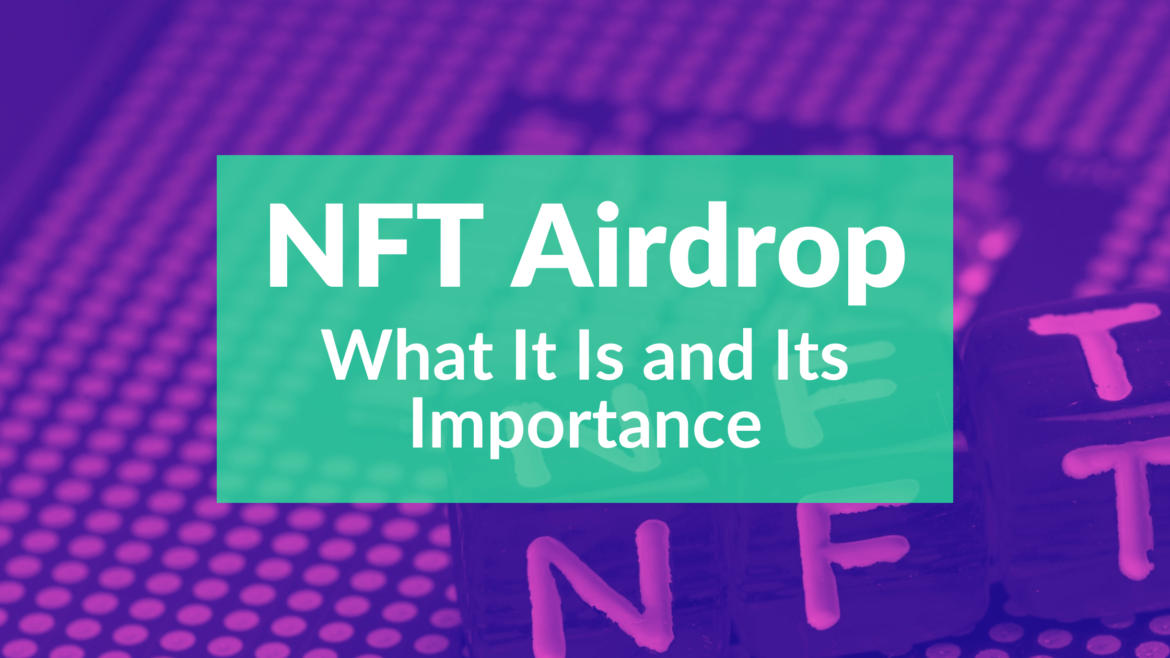What is an NFT airdrop?
An NFT airdrop is the dispersion of non-fungible tokens (NFTs) sent to users’ wallets by NFT developers. These are usually shared as promotional tools to raise awareness of a new currency or project and are traded on an NFT marketplace.
Standard and exclusive airdrops: how can you get them too?
The users on an NFT marketplace are divided into two groups based on their activities, interactions, and duration of such interactions. Let’s check out which group you fall into:
- Standard airdrops
These airdrops are rewarded on completion of certain basic tasks like filling in details or subscribing to a newsletter or simply registering yourself. On completing the required task; you are rewarded. For instance, a new restaurant offers free dessert after having a meal.
Keep in mind that you do not have to spend anything to receive standard NFT airdrops.
- Exclusive airdrops
To receive exclusive airdrops; it is crucial for a user to have shown long-term loyalty. It can be in the form of being a long-time user or being a loyal subscriber.
Example of successful airdrops
Ontology is one of the successfully executed NFT airdrops which took place in January 2018. 1000 ONT tokens were rewarded to everyone that signed for the newsletter. In just two months, that is, in March 2018; one ONT token was worth $11. Well, for providing an email address; this sure sounds like a good exchange.
And so, if wisely done, participating in NFT airdrops can be profitable in the long run. But always be cautious while trading your information for incentives.
List of the top 5 NFT airdrops of 2022
Based on expert analysis and the market scenario; below mentioned three airdrops are currently chased out on the NFT market:
- MetaMask
- CryptoPunks
- PancakeSwap
- StormGain
- Bored Ape Yacht Club
How to get an NFT airdrop?
To get an NFT airdrop; you may or may not have to perform specific tasks. Only the NFT developers decide how an airdrop should be executed and on what basis.
They can either give it away without any exchange of activities for onboarding new users or promoting new projects. Or, they can ask users to complete certain tasks like sharing a social media post or referring to the NFT, and so on.
Why are NFT airdrops important?
If you visit an NFT marketplace, you will notice a wide range of NFT projects available. How then, does a brand cut the noise? By providing some value-addition and free-of-cost gifts!
These come in the form of NFT airdrops. From another point of view, airdrops allow brands to build new relationships and nurture existing ones.
These are also straightforward and cost-effective modes of promotion. Airdrops are an excellent way of getting new users onboarded and then, if properly retained, can become lifelong and loyal users.
Are NFT airdrops safe?
Well, the majority of NFT airdrops are safe but there’s always a risk involved. If you are accepting NFT airdrops; make sure you use a public wallet for the same and empty the same before accepting airdrops.
Never skip on conducting due diligence, and never give out your private key. Even if the airdrop is commonly talked about; as a user, it is your duty to keep yourselves secured. Also, an airdrop would not require you to send currency and so before accepting airdrops; make sure you are not spending money.
How to identify scammy NFT airdrops?
While receiving an NFT airdrop; be cautious of the following situations:
- Does it ask for you to pay a fee to receive the airdrop?
- Does it ask for your wallet details? Like the password?
- Does it ask for screen sharing? (This is the most basic sign of online scams)
- Is the brand unverified? Is the NFT airdrop unverified?
- Does it redirect you to an unknown link? Does this new page ask you to enter a wallet phrase or password?
- Is the offer too good to be true? If it is, take a step back and reconsider your choice.
These are a few scenarios that are signals of scammy NFT airdrops. If you ever enter any of these scenarios; ensure you step out as soon as you can.
Conclusion
To sum it up, NFT airdrops are a win-win for both the developer and the user. The developer gets recognition and the user gets rewarded for completing a simple task.


